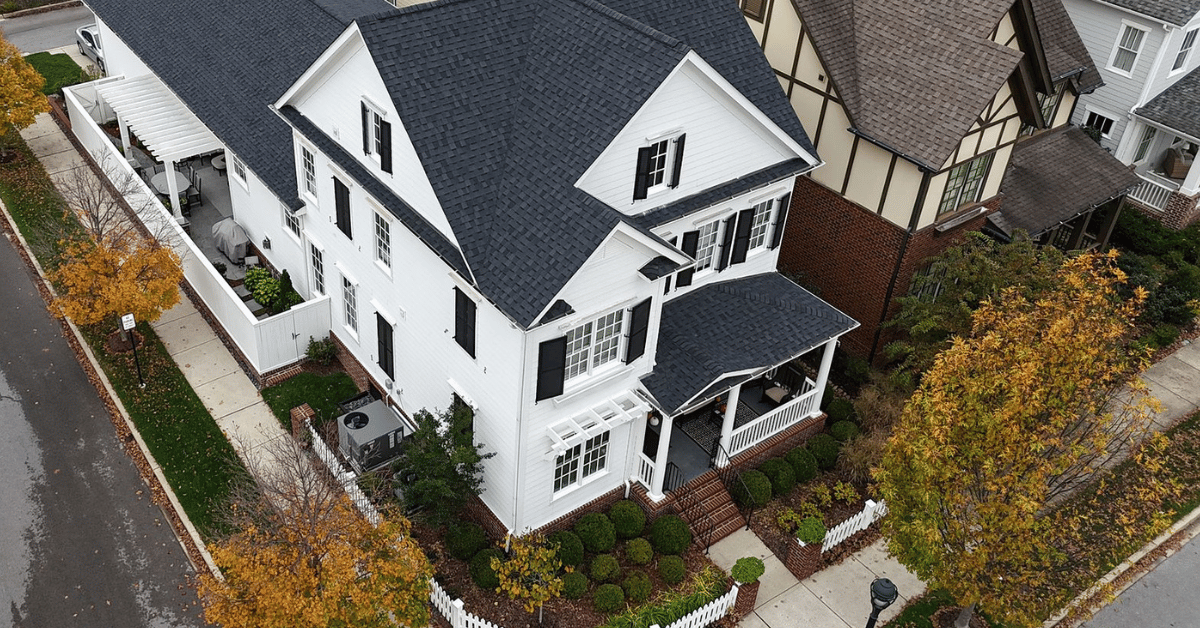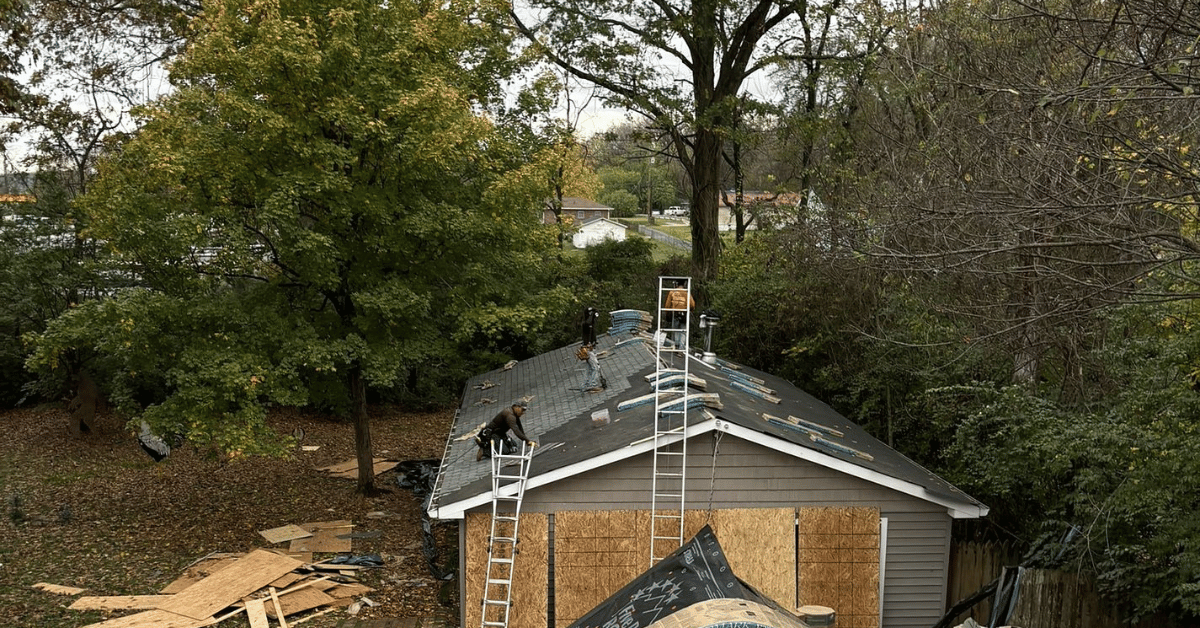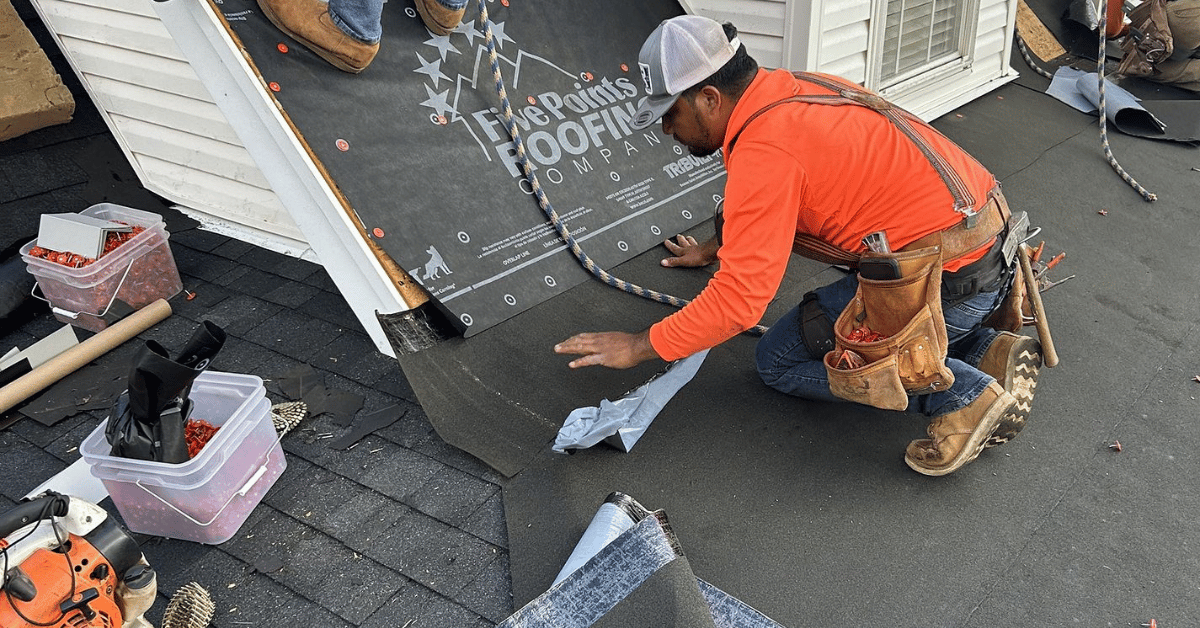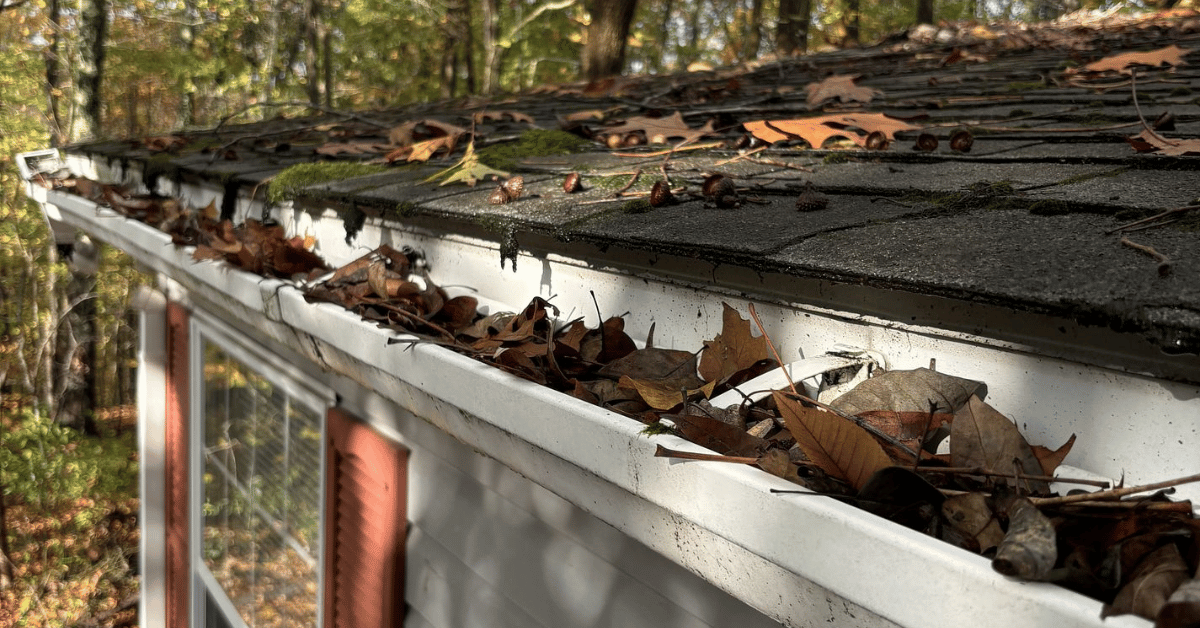
Highlights for Fall Roof Replacement
With winter in Nashville just around the corner, you may notice some issues with your current roofing system. From missing shingles to ceiling leaks, you might realize that you must replace that roof. But can you replace a roof in the fall or winter? This is a great question that we get every year from Tennessee homeowners. Yes, you CAN replace your roof, but it’s essential to use proper technique from start to finish. This way, you can ensure that your roof performs at peak condition every season.
Table of Contents
Fall Roof Replacement: What’s the Best Temperature for Installation?
Asphalt roof shingles should be installed between 40 and 85 degrees Fahrenheit. Even high-quality asphalt shingles can crack when hammered, and installing them at the wrong temperature can promote breakage, especially during freezing temperatures. This is one of the biggest problems when you install shingles when it’s under 40 degrees. Winter is often a great time to get a good deal on a new roof. However, we will need to wait until the temperature is in the right range before scheduling an installation date.
Fall is the best time to replace your roof. Mild weather conditions allow contractors to work efficiently, reducing the risk of delays and ensuring proper installation of roofing materials. The moderate temperatures are ideal for roof repair, contrasting with the challenges posed by freezing temperatures during winter.

Ideal Weather Conditions
The fall season offers ideal weather conditions for roof installation, making it the perfect time to replace your roof. The mild temperatures and low humidity create a comfortable working environment for roofing contractors, allowing them to work efficiently and effectively. This ensures that your new roof is installed correctly and with minimal disruptions. With the fall season’s moderate weather, you can expect fewer delays and a smoother roofing project overall.
Roofing Materials and Temperature
Some roofing materials require specific temperature conditions to seal correctly. Moderate temperatures between 45°F and 85°F are ideal for installation, allowing the materials to adhere correctly and settle securely. The fall season typically falls within this temperature range. Therefore, making it an ideal time for roof replacement. Extreme weather conditions, such as harsh winters or hot summers, can hinder the installation process and compromise the quality of the roof. Ensuring that your roofing materials are installed in the right conditions is crucial for a sturdy roof that lasts years.

Top Troubles of Contractors’ Installation in the Winter
Aside from shingles becoming brittle in the winter, there is another crucial reason why it’s important to wait for the right temperature. Any ideas? It’s all about adhesive! Some self-adhesive shingles have difficulty sticking when the temperature drops below 40 degrees. The sealing strips typically have no trouble bonding in the spring and summer, but we need to wait until the temperature is higher in the winter. If you choose another type of roofing aside from asphalt, you’re not necessarily out of the woods. Fiberglass shingles are very susceptible to fracturing in the winter, and shakes can break apart as temperatures approach freezing temperatures.
If I Waited Until Winter, Can I Still Replace My Roof?
Despite a handful of obstacles associated with winter roofing installation, winter is still a perfectly acceptable time to replace your roof. As mentioned before, the best deals are often offered as the roofing business slows down. However, it is essential to address roof maintenance before winter to safeguard against the damaging effects of freezing temperatures. In addition, we use numerous techniques to ensure that cold temperatures don’t impact your new roof.
Keeping Your Asphalt Shingles Warm
One of the first steps is to ensure the roofing shingles are warm before they’re installed to prevent issues caused by freezing temperatures. This can be as simple as storing them in a heated garage or warehouse before delivering them to the homeowner.

Properly Sealing the Shingles
In addition to keeping the shingles warm, it’s also essential to use proper techniques for sealing shingles in the winter. Mild weather conditions during fall make it an ideal time for roof repair and maintenance, as moderate temperatures allow contractors to work efficiently, reducing the risk of delays and ensuring proper installation of roofing materials. Most roofing shingles are designed with thermally activated asphalt sealant. This bonds the shingles to the roof using sunlight, and it can take up to a couple of weeks for the shingles to completely stick.
The approach is slightly different in the winter, where sunlight can sometimes be scarce. In the wintertime, a professional roofing contractor may hand-seal the shingles with an approved asphalt roofing cement or other adhesive provided by the manufacturer. Every tab should be sealed with one or two dabs (roughly 1 inch in diameter) of asphalt roofing cement. The cement should be near the shingle’s edges but never exposed. Rakes and eaves are the most susceptible to wind-blowing shingles off the roof. Use great care in this area, and ensure each shingle has the proper sealant for best results.
Working with Roofing Contractors
When working with contractors, it’s essential to consider their availability and schedule. The fall season is a popular time for roof replacements, so booking your contractor in advance is crucial to ensure they can accommodate your project. Additionally, allow several weeks of lead time for your roofing contractor to schedule a crew to install your new roof. This will ensure that your project is completed efficiently and effectively. By planning, you can secure the best contractors and avoid delays.
Cost-Efficiency of Roof Installation
Replacing your roof in the fall can be a cost-efficient decision. By installing a new roof before harsh winter weather sets in, you can avoid costly repairs and minimize the risk of damage to your home. Additionally, a well-maintained roof can help reduce heating costs by providing better insulation and energy efficiency. Furthermore, many roofing contractors offer competitive pricing and promotions during the fall season, making it an ideal time to invest in a new roof. Taking advantage of these deals can save you money while protecting your home.

Regional Climate Considerations
While the fall season is generally considered the best time for roof replacement, regional climate considerations can significantly determine the ideal time for your project. Roof replacement can be done year-round in areas with mild winters, such as the southern United States. However, in regions with harsh winter weather, such as the northern United States, replacing your roof before the winter season is essential to ensure your home is protected from extreme weather conditions. Consult with a local roofing contractor to determine the best time for your roof replacement project based on your regional climate. This tailored approach will help you achieve the best results for your specific location.
What About Winter Roof Maintenance During Harsh Winter Weather?
Even if you don’t intend to replace your entire roof this winter, your roof still may require maintenance to safeguard against the damaging effects of freezing temperatures. Be very careful about walking over shingles when it’s cold since they can easily break under the weight of your foot—primarily if the shingles are located on an uneven surface or slightly curved. Activity on your roof may also break the sealant bond on the shingles, so be prepared to hand-seal shingles peeling away from your roof. If you have any questions regarding a new roof replacement, now is the time.





